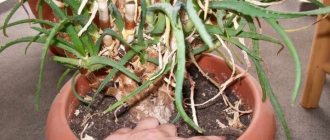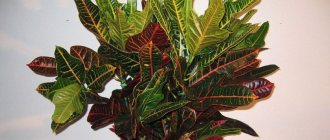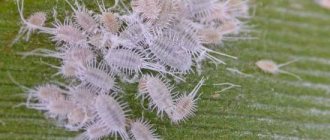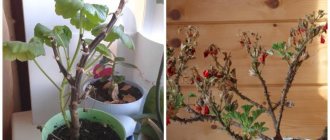The color of the flowers can be white or yellow, it all depends on the variety, but the plant blooms at home extremely rarely.
Pachira fruits are oval-shaped and olive-colored, with a maximum size of 10-25 centimeters. The fruit itself is not edible, but its seeds, covered with a peel, can be eaten. The pachira seeds (nuts) are removed from the fruit and then processed to taste: they can be eaten raw, boiled or roasted.
The flowers and leaves of the plant are also edible, but are rarely eaten.
Description, varieties and photos
Below is a description of the most popular indoor varieties and their photos:
Pachira aquatica (Aquatica), which is also called the bottle tree. The leaves of the plant have an oblong shape with five branches and are dark green in color. The stem has an internal depression, which, by accumulating moisture, helps Aquatica survive in extreme heat without special care.
Pachira silver, which differs from the previous variety only in the silver pattern on the leaves.
Pachira rotundifolia, which is very different from its relatives. Its leaves are round in shape, and its stems creep along the soil rather than growing upward.
Introduction
The homeland of this unusually beautiful plant is the tropical part of Central and South America . Pachira is called a bottle tree , and it belongs to the baobab family .
Evergreen smooth leaves grow on long petioles, and flowering begins in June and ends in November, but if conditions change, the onset of this phase may shift. Large flowers have a vanilla scent and are collected in an inflorescence - a panicle.
Reproduction
Pachira can be propagated in only two ways:
- using seeds - a natural method of reproduction,
- using the cutting method, which can be used as the plant grows.
When using the second method, it is important to know that the cuttings must have a “heel” in order for Pakhira to take root. The cuttings should be transplanted into a pot with a small diameter, and the subsequent transplantation should be done a year later, preferably in the spring.
Planting a plant
When growing a flower from seeds, you should take into account the shelf life and proper storage. This information must be read on the packaging. Sowing is done on top of moist soil , after which the seeds need to be sprinkled with a thin layer of soil and sprayed with water.
To achieve early germination of the plant (in about 3-4 weeks), you can cover the pot with film, however, if the room temperature is high enough, this should not be done. The subsequent replanting of the plant will take place only after a year.
Sowing this exotic flower must be done in the spring - this way Pakhira will feel more comfortable, and subsequent replanting will be successful.
How to transplant correctly?
For subsequent replanting of young plants, you should choose a low, shallow pot with a good drainage layer at the bottom.
It is better to buy soil at a flower shop intended for dracaenas. Transplantation is carried out annually at the end of March. When preparing the soil yourself, you need to combine turf, leaf soil and sand. You can also add some brick chips or charcoal - this will help strengthen the trunk. When replanting pachira, the diameter of the pot should be increased by 5 centimeters.
Young plants need to be replanted every year, and adults every 3 years.
In the room where it is planned to grow pachira, a number of conditions must be met. We will tell you which ones further.
Kinds
Pachira aquatica / Pachira aquatica
Or pachira aquatic. Lives in tropical South America. With proper care, the plant can grow up to 3 m in height, and the diameter of the crown - up to 1.5 m. The plant can survive drought for quite a long time, since it uses the moisture accumulated in the bottle trunk. But the plant tolerates excess moisture very poorly, even to the point of death. The leaves are similar to chestnut leaves, for which the plant received the name Guiana chestnut. The leaves are leathery to the touch, dark green in color, palmately compound. It is very difficult to achieve flowering in culture. If this happens, depending on the variety, the flowers may be white or yellowish. Flowers are collected in paniculate inflorescences. The fruit is an oval berry, reaching a length of 10 to 25 cm. The seeds from the fruit can be eaten.
- Pokonnik: cultivation and care in open ground
Plant care
Watering and humidity
This plant does not need too frequent watering; it is accustomed to a hot, dry climate. It should be watered as the soil dries, and the bottom watering technique should be used. The trunk should not be allowed to get wet, otherwise this may lead to its rotting and the pachira will die. The water should be at room temperature or slightly warm. In autumn and winter, pachira should be watered less frequently than usual.
The humidity requirements of this plant are also minimal; it can only be lightly sprayed in the morning and evening hours, as is the case with watering, without touching the plant trunk. Spraying should be done only in spring and summer; the plant does not need it in winter and autumn.
If the pachira leaves begin to fall off, the reason for this may be too frequent watering. In this case, it is better to leave the plant alone, and subsequent watering can be done through the tray in which the pot stands. In this case, it is necessary to make small holes in the pot so that the roots of the plant can absorb moisture.
Necessary feeding and fertilizers
From spring to the end of summer, the plant needs regular feeding , which can be purchased at a flower shop.
Fertilizing is not difficult, you just need to add the concentrate in the required amount to the pot with the plant, you can lightly loosen the soil so that it better absorbs the necessary substances.
The complex includes several mineral fertilizers at once, and no fertilizing is required in autumn and winter.
Temperature Requirements
In spring and summer, the temperature regime should be as close as possible to the conditions in which the plant is accustomed to being. The minimum value on the thermometer scale will be 25 degrees. In autumn and winter, the temperature can be reduced to 16 degrees.
During the hot period, it is necessary to ensure ventilation of the room where the pakhira is located, but drafts should not be allowed.
Lighting requirements
The absence of direct sunlight and drafts - these are the basic principles for choosing a place for pachira . This flower loves bright, diffused light, so it is better to place it on the east or west side. A window facing north will not work; the plant will not have enough light, which is the source of its nutrition.
The south side is suitable only if the plant is provided with shade during the period of active sunlight. You can place the pot both on the balcony and on your summer cottage in the summer, but you should gradually accustom the pachira to its new environment. It is also important to protect the flower from precipitation.
Trimming
With the arrival of spring, it is necessary to trim the stems , which begin to stretch.
The plant may thus lose its stability. From the point of cutting, new foliage begins to grow, and therefore the crown of the pachira becomes more luxuriant, and the plant acquires an aesthetic appearance.
Experienced gardeners trim stems using various techniques. Pachira often becomes the object of such an art form as bonsai.
Shaping the trunk
Pachira is a solitary flower, but there are cases when several seedlings are planted in a pot at the same time to decorate a room. As the trunks grow, they can be braided to their liking ; braided braiding is very popular. In a few years (on average 3-4 years) you will be able to admire an interesting creation.
Pachira is one of several plants that the Japanese use in the everyday interior of their homes. It fits perfectly into the minimalist and loft style.
Useful video
An interesting video about caring for pachira at home: pruning, watering, why does it shed its leaves?
Recommendations
Do not be afraid to dry out the pachira in the autumn-winter period. Water consumption at this time is reduced by about 3-4 times. In addition, the plant is adapted during dry periods to expend moisture, which accumulates in the cavity between the bark and wood.
- The home flower pachira belongs to the “bottle trees”. They store water in the thickened part of the stem. Make sure that the pachira trunk is elastic.
- Pachira, like Crassula, is often called the tree of wealth. It is recommended to place it in a part of the house that, according to Feng Shui, symbolizes attracting money.
- It is important to remember that when replanting, you should not bury the plant below the level at which it grew before replanting. Compliance with this rule will protect the roots from rotting and will delight the owners with another decorative quality - stilted roots beautifully protruding above the ground, which thicken over time. Due to this property and the flexibility of young shoots, pachira is sometimes formed into bonsai. But more often the trunks are braided into spirals and braids while still young. Over time, this technique gives the plant a very impressive appearance.
In the autumn-winter period - a period of relative plant dormancy, which is manifested by slow metabolic processes, there is a risk of stem rotting from excess soil moisture. When rot appears on the pachira, the leaves turn black and the stem becomes soft. As soon as alarming symptoms are noticed, you need to remove the plant from the container, carefully shake off the waterlogged soil, inspect and remove the rotten parts of the plant.
You also need to treat the cut areas with sorbent (crushed coal) and plant them in a fresh substrate. At first, you need to significantly limit watering, giving the soil substrate the opportunity to dry thoroughly. The amount of water during watering should be such that the moisture completely saturates the lump, and a small amount of water passes to the pan.
Diseases and pests
In comparison with other indoor plants, pachira is considered not picky, however, like everyone else, it is susceptible to attack by various diseases and pests.
The most common pests are:
- spider mite,
- aphid,
- thyroid gland,
- thrips.
In case of damage, parts of the flower should be removed and treated with special chemicals sold in a flower shop. The type of product depends on the type of insect that caused the damage. If the stem is damaged, it also needs to be treated by planting the flower from the pot and replanting it in fresh soil, because pests can remain in its inner layers even after treatment.
Pakhira after purchase
After purchase, the plant must undergo an adaptation period in the indoor conditions of your apartment within two weeks. It is advisable to keep the tree in quarantine: away from other plants. And only after making sure that there are no pests on it can it be moved to a permanent place.
When the quarantine period is over, it is better to replant the flower immediately: transport soil is not the best environment for permanent maintenance of pachira. Water the plant, let the soil become damp and remove the plant from the pot. Select a tall, stable pot a little wider than the existing one and replant the tree, trying to replace the old soil with new soil (palm substrate is suitable). After replanting, water the plant moderately with root solution to restore damaged roots.
Rules of care
The basic rules for caring for a flower are as follows:
- excessive watering of the pachira is unacceptable, otherwise the roots and trunk may rot, mold will form and the plant will die,
- the presence of drafts is also unacceptable, because we must not forget that the flower comes from South America, which means it loves warm climates,
- changes in room temperature, as well as direct sunlight, negatively affect the well-being of the plant, it may turn yellow,
- You cannot place a flower near artificial heating sources - a battery, a heater, otherwise this threatens the death of the plant, because the soil becomes dry with such content and the air humidity decreases, the pachira lacks oxygen.
What to do if the leaves turn yellow and fall off?
Cases when the leaves of a flower turn yellow and fall off are common and indicate that the plant was provided with improper care and maintenance.
In this situation, you should pay attention to feeding, because... insufficient soil nutrition affects the health of the flower.
A common cause of yellowing of the plant is direct sunlight on the leaves . Try moving the pachira to another place or creating a small shadow.
If the flower has black and curled leaves, this may be a sign of frostbite, so the flower should be placed in a more suitable place with a temperature of at least 25 degrees. Feeding the flower should be done 2-3 times a month, and then observe the growth of the plant and its appearance.
If none of the above measures produce results, you can try replanting the flower in fresh soil and providing proper care.
Pachira aquaticum - tree-like caudex with elegant simplicity of leaves
Pachira aquatica does not at all look like an exotic plant and, unlike its caudex colleagues, at first glance it does not give the impression of an unprecedented exotic. In spirit and character, it is more akin to classic indoor woody plants; it gives the impression of a traditional and even relict plant. Strict, neat, with simple but elegant forms, the pakhira is easily misleading. Despite such a discreet appearance, it requires the same care as any other caudex plant.
The pachira came to us from the tropical forests of South America, where it can be found in swampy areas. In its homeland it is also known as the Guiana or Malabar chestnut, and in the West as the Chinese and money tree. In our country, Pachira aquaticus is most often called the bottle tree, although it shares this name with several other caudex crops.
The water pachira (Pachira aquatica) captivates with its tree-like silhouette and structure. From a distance, it is difficult to guess the unusualness of the pachira: it just seems like a classic, strict and even somewhat prim tree. And only from a close distance can you appreciate all the advantages of this beauty. Most often, pachira plants on sale are represented by specimens with artificially intertwined trunks, which seem like a bizarre work of art.
But pachira trees with a simple trunk are also very beautiful (especially since with age they will begin to bush and produce side shoots). Weaving the trunks of several different young plants into a kind of braid is very impressive, but it also has its drawbacks: over time, sooner or later, some of the plants intertwined with each other die and die, and only the strongest survive. But this happens slowly and for many years you can admire the complex ligature of the stems.
The height of the trunks increases over time: in young plants they are practically not visible, but the “leg” gradually lengthens and rises. The height of pachira aquatic in indoor culture is limited to 1-1.5 m. The trunk is thickened downwards, it stores water between the bark and wood. Branches with luxurious leaves only decorate the original trunks of the plant.
Even the foliage of the aquatic pachira is deceptive. From a distance, it seems that the plant produces classic large oval-lanceolate leaves with an impeccable silhouette, but everything is not so simple. In fact, the ideal dark leaves are just fractions of five-fingered complex leaves spread out like a palm. The dark, rich color favorably emphasizes the classic beauty of the greenery of this plant. The palm-shaped leaves of Pachira aquaticus seem both massive and graceful at the same time. And even if there are not so many of them, they create a full-fledged crown.
Pachira aquatica
Signs and superstitions
Feng Shui philosophy associates pachira with a certain talisman that brings good luck, prosperity and health to the house. This flower weakens the effects of negative energies . One of the signs that is associated with the formation of the next pachira leaf is an increase in wealth in the house.
According to popular belief, it is not customary to give away pachira, otherwise it may have a bad effect on other plants in the house. If, after all, the owner decided to give this exotic flower, then it is necessary to take something in return.
Prevention
Plants are living organisms that need heat, moisture, light and air. But even if ideal conditions are created for the flower, it needs to be inspected periodically. After all, it can get sick after transplanting into undisinfected soil or container.
Infectious agents spread not only through the soil, but also from neighboring (sick) flowers if they are too close. To protect a tropical crop, you need to periodically spray it with the biological product Fitoverm-M. This product is also suitable for treating (disinfecting) soil.
Graceful, unlike other plants, evergreen pachira can become a worthy decoration for a residential or office space. Correctly selected lighting, temperature conditions and watering with soft, settled water will help the plant remain attractive for many years.
Photo gallery
ninawergal_
torik_i_sherik
cvetivokrug
gloxiniastar
katya_zukovskaya
my_flowers_rnd










